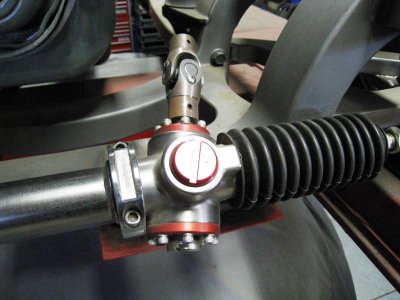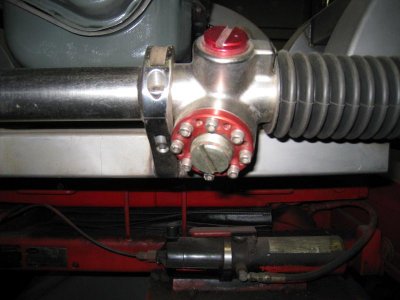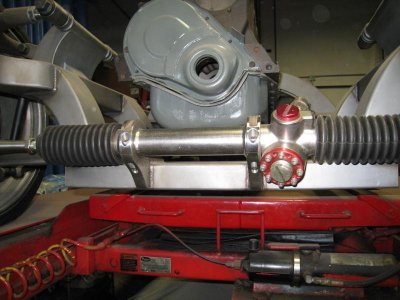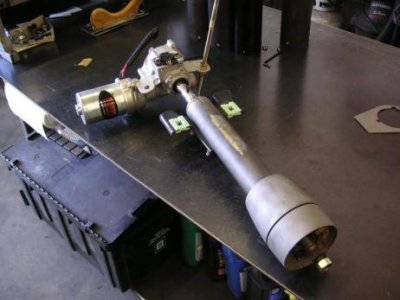Some thoughts.
Hi Guy's,HYRDGOON, sometimes I hesitate to share my opinions in these discussions, we all know about opinions don't we! We have utilized some of this type of column mounted power assist units on our projects. On a vehicle with parameters that align with the capabilities of these units, they can be an excellent solution. We haven't used them all but they all share the same basic design and all have similar capabilities and issues. This type of steering assist was originally designed for use on ATV's, golf carts and other small, light weight vehicles. Simplicity of installation makes them an attractive option for adding power assist to a manual steering vehicle.
In a vehicle with low front axle weight (1200-1300 LBS) and good steering geometry they will work well, in short if you could drive it without power steering and just wanted some assist to make it more pleasant to drive these systems are an excellent fit. A "B" Body in any configuration except possibly a lightened drag car, in my opinion exceeds the capability of these units. All of these systems we have seen are thermally protected and aggressive steering input (slalom maneuvers) will cause the unit to over heat and shut down, this can also be caused by steering geometry that creates high efforts, in short if you really need power assist these units probably don't have the capability. There is a highly modified unit that was an OEM system on a Toyota minivan that the endurance race teams use in the GT cars, but it's 14,000 bucks and they typically life at one race probably a non-starter.
One of the other design concerns with this type of system is that they, by virtue of driving the column shaft, place very high loads on the intermediate shaft, pinion and rack shaft teeth. In a standard hydraulic or electric steering rack the loads are applied rack shaft either through the piston (hydraulic) of the ball screw (electric). If the assist system is working properly the only loads the intermediate shaft and pinion see are the load to twist the torsion bar to open the spool valve in the hydraulic rack or operate the torque sensor on the electric rack. Most of the manual steering racks that I see utilized in the applications are very light duty. Mustang or Omni manual racks seem to be the usual choices dependent on weather front or rear steer is desired. Both of these racks will work on an occasional driver but will wear very quickly on a heavy vehicle that gets serious usage. Add in the difficulty of getting an almost straight intermediate shaft run, on most of our cars and driving the column shaft can become an issue.
One of my friends and I have been building a vehicle for quite some time and it was our intention to use one of these column assist units if we got to old to deal with the manual steering. We design a steering system that we believed would be low effort in the manual condition. By design it has long steering arms a 16:1 rack ratio, a nice rolling scrub radius and a large diameter steering wheel. All good for easy steering wheel efforts, but I still couldn't to use one of those little manual racks, so we made our own. We utilized a rack shaft and pinion from Woodward Steering so the parts are replaceable if they wear. Please forgive the rust and dust it's been sitting for awhile.



Most of the OEM electric power racks don't lend themselves to packaging in anything other than an east-west application, large SUV's or Pick-ups. In my opinion the column assist systems are not robust enough in your application for the aforementioned reasons. So in my opinion, by default, a hydraulic steering rack would be your best choice. If you don't have room to package the pump you can always use an EHPS pump.........................But that's another discussion!
























